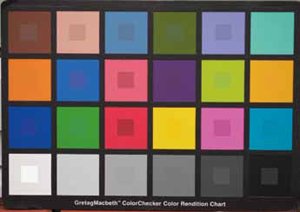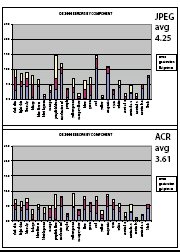articles/Cameras/xpro1-page2
The Fujifilm X-Pro 1 Review - part 2 of 1 2 3 4 5 6 7
by Tom Lee Published 01/12/2012

It should be understood from the start that this is not a rangefinder camera, there is no optical range-finding system, but you can look through a rangefinder-like window that is complete with all the parallax issues of a rangefinder but does provide a viewing area, delineated by instructions from the attached lens. However, a flick of the lever on the front (which for all the world looks like an old-fashioned self timer) brings the electronic viewfinder to life with all the advantages that this brings.
The camera has its own mount and the three lenses we looked at all benefit from the non-reflex arrangement of the body. In the absence of a mirror for reflex viewing an number of advantages kick in. The lens designer has one more degree of freedom because the back focal distance no longer has to clear a mirror box and be artificially spaced away from the detector by use of inverted telephoto designs for wide angles. An added benefit is that without a mirror clacking up and down, the noise and vibration are reduced. We measured the noise level of the Fuji X-Pro and a DSLR at one metre distance. The Fuji delivered a sound level approximately one quarter of that of the DSLR and representative of about one quarter of the sound made by normal conversation at one metre (65Db down to 47Db for the record, measured with an iPhone). This discreet operation opens a number of opportunities for the social photographer when they are trying to remain as unobtrusive as possible and many wedding photographers might buy this camera for that reason alone. We remain sceptical about parading oneself in front of a wedding party with a compact camera half the size of Uncle Jim's DSLR.

The Electronic Viewfinder - the EVF
This is recent technology in which the reflex pentaprism is replaced by a 'repeater' emitting device which projects what the chip is 'seeing' into the viewfinder. Unsurprisingly Epson are leading the way in this field (they own the IP for all 3 LCD technology in projectors) although we are unable to confirm whether Fuji are using it. The mirror and pentaprism are thus replaced by a small wire with all the size and weight benefits that this brings. Advantageously the exposure histogram can also be projected into the viewfinder but it is also joined by full exposure data, a horizon indicator a focus distance, and depth of field indicator. Additionally the menus for the camera may also be projected up to the eye-piece and so there is no need to move the camera from your eye at all and adjusting in difficult light, weak or strong, is simple. This level of electronic reporting comes at a price; it is rather heavy on battery consumption but this is to some extent reduced because the EVF is triggered only when your eye is brought to the camera.
The sibling Fuji X-E1 takes the EVF approach a step further and abandons an optical viewfinder all together; effectively there is a hole in the back of the camera and you peer into that - it's actually a bit disconcerting at first!
Please Note:
There is more than one page for this Article.
You are currently on page 2
- The Fujifilm X-Pro 1 Review page 1
- The Fujifilm X-Pro 1 Review page 2
- The Fujifilm X-Pro 1 Review page 3
- The Fujifilm X-Pro 1 Review page 4
- The Fujifilm X-Pro 1 Review page 5
- The Fujifilm X-Pro 1 Review page 6
- The Fujifilm X-Pro 1 Review page 7
1st Published 01/12/2012
last update 21/07/2022 08:46:26
More Cameras Articles
There are 30 days to get ready for The Society of Photographers Convention and Trade Show at The Novotel London West, Hammersmith ...
which starts on Wednesday 14th January 2026










